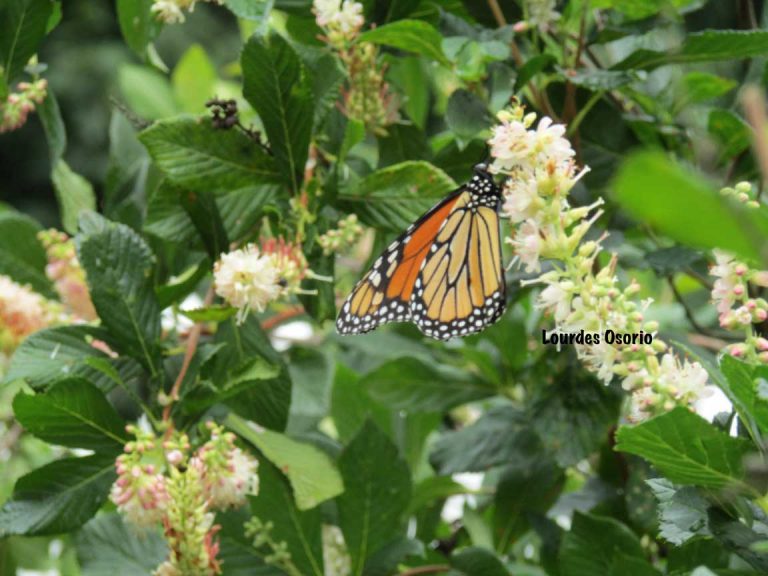As you stroll past the notice board towards the Knippenberg Center in August, a wonderful fragrance permeates the air. You might look around and wonder where it’s coming from or whether you are just imagining it. There is no large flower around to create this scent. Instead, look for the small white flower spikes of the aptly named summersweet, a shrub you are passing in the native plant garden. The nectar it produces is very attractive to bees, butterflies and other pollinators, in fact it is one of summer’s best plants for these insects, therefore contributing to our ecosystems as well.
Summersweet, whose botanical name is Clethra alnifolia, has glossy green leaves that offer good yellow fall color. As with most native plants, it requires little maintenance and needs minimal pruning, usually just to help it maintain its shape.
This plant is easy to grow as it is adaptable to many conditions, thriving in sandy soils as well as heavy clay and in dry to wet soils. In fact, its natural habitat includes river edges. It grows in full sun to shade, being one of few shrubs that can flower in shady areas.
A number of varieties are available with varying heights reaching from as little as 3 feet tall to as much as 8 feet, so it fits both small and large gardens, but you must be aware of the mature height of the plant you are buying. It grows by suckering, though not aggressively. Summersweet’s wide range of attributes offers gardeners the opportunity to use it in various ways, from a specimen plant to rain gardens to an effective hedge that screens unwanted views. It’s August flowers gave way to dark brown seed capsules that remain through the winter months. It has one fault—the deer like it, too. If you are looking for a beautiful shrub that offers 3 season appeal, a long bloom time, fragrance, attracts pollinators and grows under almost any condition, be sure to consider our native summersweet. I invite you to see it for yourself in the native plant garden.
Lourdes Osorio is a member of the Laurelwood Arboretum Board of Directors, the creator of Native Plant Channel on YouTube and Facebook, a free resource that produces videos that help gardeners grow native plants and offers video tours of lovely native plant gardens both public and private. She is a Rutgers Certified Master Gardener for over 20 years. For more information on growing native plants please visit Native Plant Channel.

